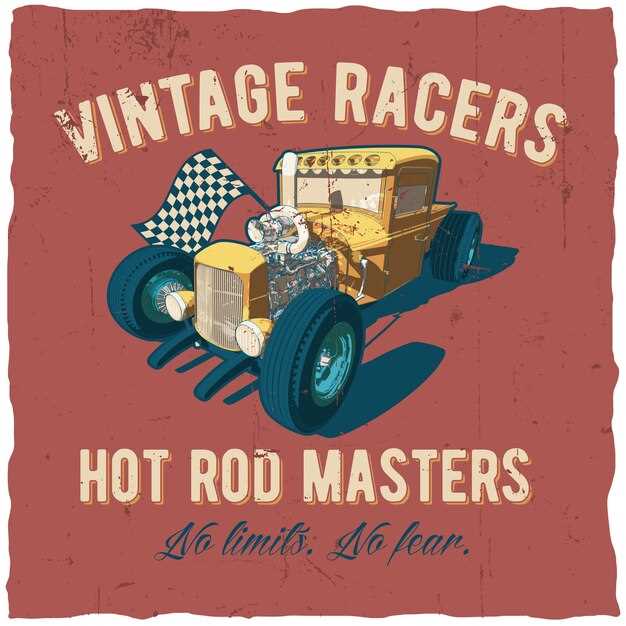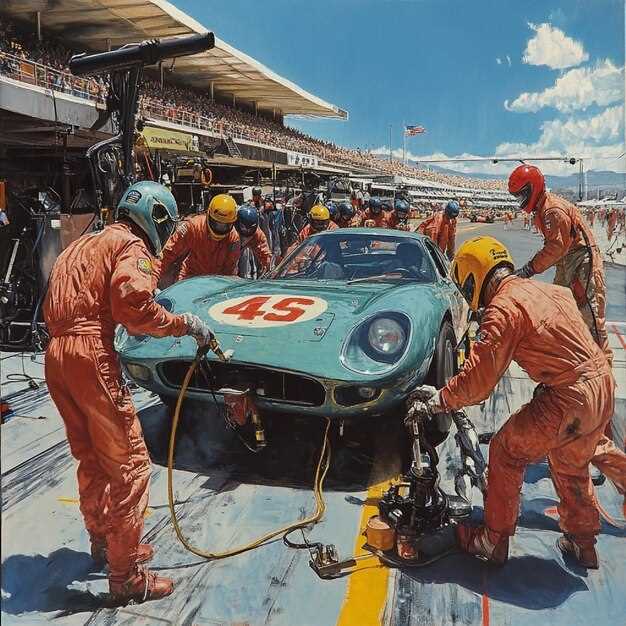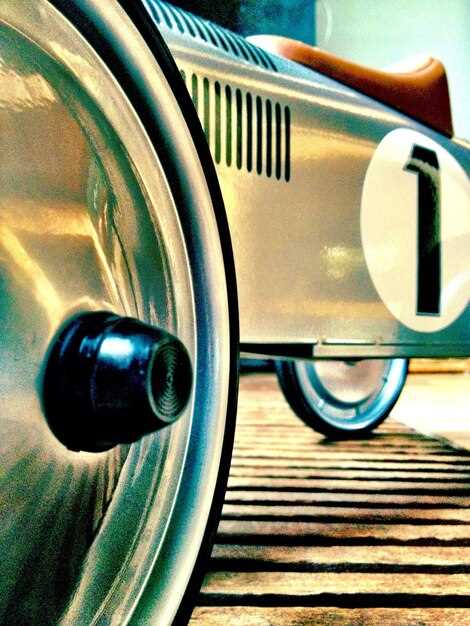
Europe is a continent rich in historical significance, particularly when it comes to the world of racing. The passion for classic automobiles is deeply embedded within its culture, reflecting a heritage that spans generations. From the winding roads of Italy to the iconic circuits of Belgium, the legacy of vintage motorsports is not just about speed; it is a celebration of engineering, artistry, and the spirit of competition.
As we delve into the realm of European vintage racing, we uncover a tapestry woven from the experiences of legendary drivers, innovative car manufacturers, and fervent enthusiasts. Each race tells a story, preserving memories of an era where the roar of engines and the gleam of polished chrome epitomized the thrill of the chase. The very tracks that once witnessed historic rivalries now serve as living museums of a time when racing was not just a sport but a way of life.
Through our exploration, we aim to illuminate the factors that have contributed to the enduring allure of vintage racing in Europe. From prestigious events that attract spectators worldwide to grassroots gatherings that foster community among aficionados, the culture surrounding classic motorsports thrives on passion and tradition. It is this sense of belonging, coupled with a deep-rooted appreciation for the craftsmanship of classic machines, that keeps the spirit of European racing alive.
Understanding the Role of Iconic Races in Shaping Motorsports History

Iconic races have played a crucial role in the development of motorsports as we know it today, particularly in the context of European racing culture. These events not only showcase the pinnacle of automotive engineering but also reflect the social and technological changes of their times. From the legendary Mille Miglia to the prestigious 24 Hours of Le Mans, each classic race carries with it a rich history that has influenced generations of drivers and enthusiasts alike.
One of the primary functions of these iconic events is to serve as a proving ground for manufacturers. Early races provided automakers an opportunity to demonstrate speed, endurance, and innovation. As a result, many of the technologies and designs that emerged from these competitions have become standard in modern vehicles. For instance, the advancements in aerodynamics and safety features can be traced back to lessons learned on the famous circuits of Europe.
Moreover, iconic races have a significant impact on the cultural landscape of European societies. They attract audiences from around the globe, nurturing a sense of community and shared passion among fans. The glamour and spectacle surrounding these events create a unique atmosphere that can elevate the status of participating teams and drivers to legendary status. This public fascination not only boosts tourism but also inspires a new generation of racers.
Additionally, these races foster competition among European nations, each striving to showcase their automotive prowess. This competition has led to a rich tapestry of rivalries and collaborations, ultimately pushing the boundaries of what is possible in motorsports. The narratives that emerge from these events–stories of triumph, defeat, and innovation–add to the allure of racing, ensuring that the legacy of each race continues to resonate with fans and participants alike.
In summary, iconic races are more than just events on a calendar; they are pivotal moments in the history of motorsports. By shaping technology, culture, and competition, these classic races have cemented their place as fundamental components of European automotive heritage, influencing both the industry and the enthusiasts who celebrate its rich history.
Preserving Classic Cars: Challenges and Solutions in Vintage Racing
Preserving classic cars within the context of vintage racing poses significant challenges that require innovative solutions. One of the primary obstacles is the aging of original components, which may not meet modern safety and performance standards. Ensuring that these classic vehicles remain competitive while adhering to regulations is crucial in the world of motorsports.
Another challenge is sourcing authentic parts for restoration. Many manufacturers have ceased production, making it difficult to find high-quality components necessary for maintaining the integrity of these classic cars. To address this, a growing number of specialized vendors and online marketplaces have emerged, catering specifically to vintage racing enthusiasts.
Additionally, the financial aspect of preserving classic cars cannot be overlooked. Costs for restoration and maintenance can escalate quickly, often creating a barrier for entry into vintage racing. Forming partnerships with sponsors and creating community-focused events can help alleviate some of these financial burdens, allowing more enthusiasts to participate.
Furthermore, the knowledge gap among new generations of mechanics and restorers presents a challenge. Many traditional skills associated with classic car maintenance are at risk of being lost. Encouraging mentorship programs and educational workshops focused on vintage racing mechanics can cultivate the necessary talent to sustain this heritage.
Climate concerns also impact the preservation of classic cars. Vintage vehicles often require extensive resources for upkeep and can have a larger environmental footprint compared to modern alternatives. Racing organizations are beginning to explore sustainable practices, such as promoting the use of synthetic fuels and regenerative technologies to reduce environmental impact while preserving the thrill of traditional racing.
In conclusion, the preservation of classic cars in vintage racing requires a multifaceted approach addressing component sourcing, financial barriers, skill development, and environmental sustainability. By embracing these solutions, the legacy of classic cars can continue to thrive in the vibrant world of motorsports.
The Influence of European Racing Culture on Modern Motorsports

European racing culture has been a cornerstone in the development of modern motorsports, shaping the dynamics, techniques, and audiences of racing events worldwide. The legacy of prestigious events like the Monaco Grand Prix and the 24 Hours of Le Mans has created a framework that not only showcases engineering brilliance but also emphasizes strategic finesse and driver skill.
In Europe, the emphasis on innovation and craftsmanship has driven manufacturers to continuously enhance their vehicles, leading to breakthroughs in technology that benefit all motorsports disciplines. This culture of competition, rooted in a rich history of motorsport, has established a benchmark for performance and safety standards that are now integral to racing globally.
Moreover, the passionate fanbase in Europe cultivates a vibrant atmosphere at events, where traditions and community engagement are deeply interwoven. This unique blend of enthusiasm, history, and rivalry fosters a culture that inspires both teams and spectators, influencing how modern motorsports are marketed and experienced. The reverberations of this cultural influence are evident in the way international series adapt rules and formats, often embracing the European ethos of racing heritage.
Today, the principles derived from European racing–such as precision engineering, teamwork, and strategic planning–are reflected in various formats, including Formula E, World Rally Championship, and endurance racing. These adaptations highlight the significant role that European heritage plays in the global landscape of motorsports, ensuring its continued relevance and recognition.
In conclusion, the significance of European racing culture on modern motorsports cannot be overstated. It acts as a guiding light, influencing contemporary practices while securing a legacy that honors the past, fostering a deep respect for the sport and its continuous evolution.

